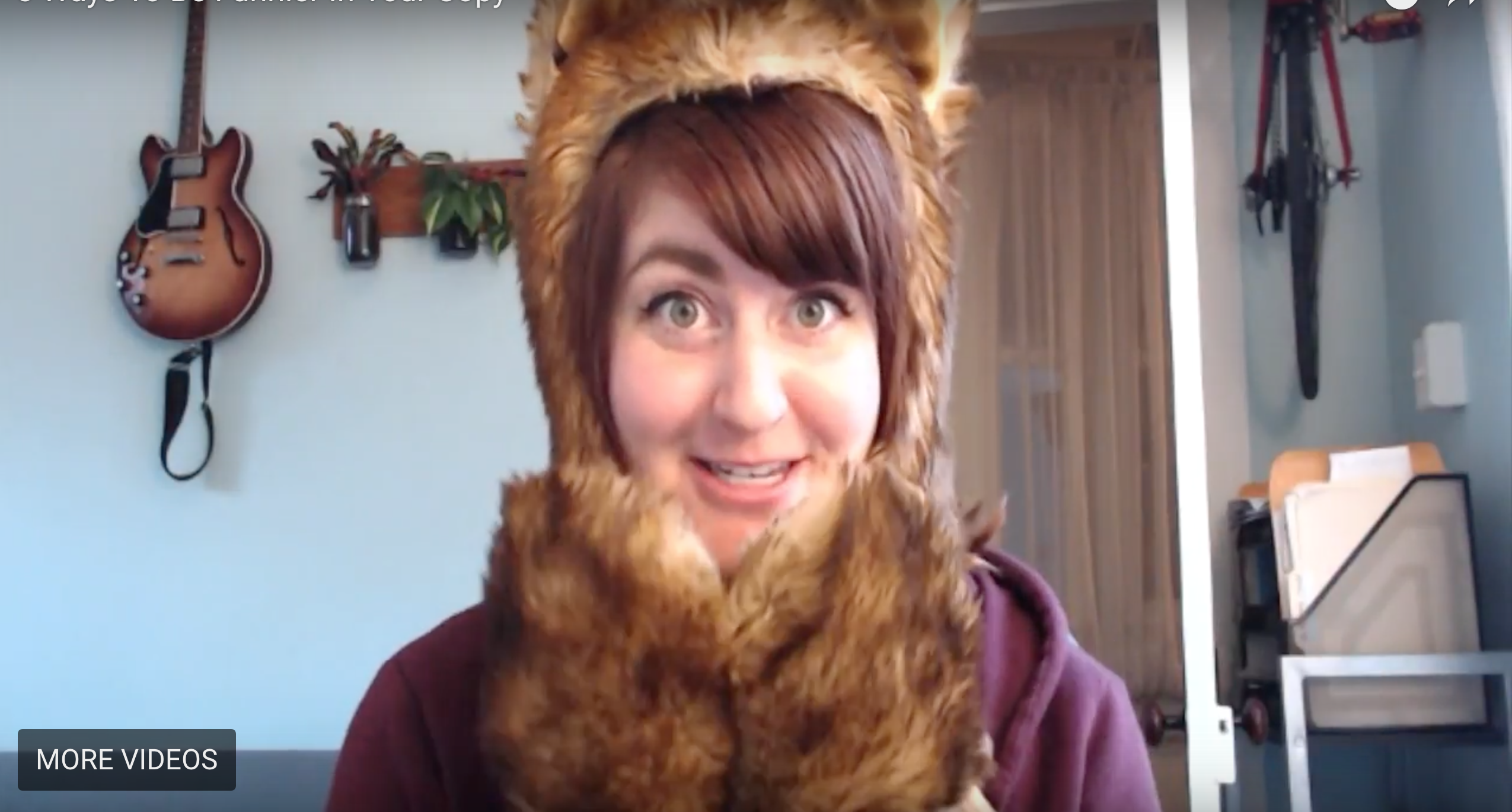Note from Millie:
This is post #4 in the CTA Series, a recap of my biggest takeaways from the 2017 Unbounce CTA Conference. Links to the previous three posts are at the bottom of this page.
Today’s post is an object lesson on breaking out of our marketing and sales siloes to learn from other disciplines.
2 More Insights from the 2017 Unbounce CTA Conference
As a marketer and a salesperson myself, I was drawn to the marketing-focused sessions at Unbounce CTA Conference. I’m so glad, however, I didn’t keep myself completely in the marketing box while I was there.
Wil Reynolds and Lianna Patch were two standout speakers, but just glancing at their session descriptions, you wouldn’t think their talks would apply much to marketers.
But you would be wrong.
“People Don’t Search for Sport”
Wil Reynolds is the founder of Seer Interactive, a digital marketing agency focused on SEO, PPC and analytics. Right out of the gate, he said something about search engines that stuck with me …
“People don’t search for sport. They search when they’re looking for solutions to their problems.”
Think about this from a marketing standpoint. People don’t go searching for your solution because they’re bored. They search for your solution — and come across your marketing — because they are trying to solve a problem.
Like Rand Fishkin, Wil talked about how many marketers are too quick to try to get customers in their funnel instead of taking the time to help the customer solve their problems.

Instead of focusing solely on converting the customer, take some time to find out about all the problems they’re trying to solve. A great way to do that is to use Google for more than searching for cute kitten photos.
Do a Google search for your customer’s number one problem — the one major challenge you know they come to you to solve — and take a look at the suggested search terms that pop up below the search box. Google pays a lot of attention to user engagement and search intent — so they’ve got a pretty good idea of what your audience may need help with. Use that information to the benefit of your marketing program!

Also take a look at the “Searches related to … ” section at the bottom of the search results page. This is another goldmine of insight about what people are searching for in relation to your area of expertise.

What is the number one problem your customer is trying to solve? This should be the hub of your marketing strategy, but to really become a problem-solver for your customers, you should also be solving other problems that are relevant to the number one problem.
“Never edit hungry.”
Lianna Patch of Punchline Conversion Copywriting is an honest-to-goodness standup comedian — and it showed in her talk on editing. The entire 20-minute presentation was like watching a comedy routine that actually taught you something.
If you have six minutes to spare, watch her video on how to be funnier in your copy.

One of Lianna’s first pieces of advice during her CTA Conf talk was to ask yourself this question before you begin editing your marketing copy or content:
“Do I need to eat something?”
As funny as that advice was, it was rather practical, too. She pointed out that when your brain is foggy, you easily miss things in your editing.
The number one thing I thought Showcase blog readers would find helpful from Lianna’s presentation, though, was her process for editing sentences.
We think a lot about the words we use, but most of us don’t often give much thought to the sentences we’re crafting. After listening to Lianna speak, I’m paying a lot more attention to those strings of words.
- If reading a sentence feels exhausting, it’s probably too long.
- Vary your sentence length to keep the reader’s attention. (Our own Showcase copywriter - and my CTA companion - added to this, suggesting the use of short sentences when she wants to get the reader excited and quickly engaged, and longer sentences when she wants to slow the pace down a bit and let concepts sink in.)
- If you took a sentence out completely, would your blog post (or other marketing assets) still make sense? Would it maybe be stronger?
Finally, Lianna shared one of her secret weapons with the audience: the Hemingway App. Plug in your copy and the app will scan it for readability. Follow the suggestions it gives you and the result will be clearer and bolder copy. (Of course, take the results with a grain of salt. You know your customers better than Hemingway does!) Try this with your complex sales and marketing emails, and see if it improves your results.
My Biggest Takeaway from Wil and Lianna’s Talks
As marketers, we can stand to learn a few things from experts in related fields. Copywriters, SEO experts, designers, UX pros, even developers can give us unique insights into how to create more effective marketing campaigns — and serve our customers better in the process.
--
Read Part 1, How Popeye Single-handedly Saved the Spinach Industry.
Read Part 2, Speaking Your Customer’s Language in Your Marketing Campaigns.
Read Part 3, When Your Prospects Win, Your Marketing Wins.